What is Anti-Meta Warriors?
Anti-Meta Warriors (also known as "Warrior Aggro") is a Yu-Gi-Oh! Goat Format deck distinguished by the presence of 2 Reinforcement of the Army and several aggressive warriors to search out with it, including but not limited to D.D. Warrior Lady Lady, D.D. Assailant, Exiled Force, Blade Knight, Mystic Swordsman LV2, and Ninja Grandmaster Sasuke. They also play a higher trap count in order to back their threats up, typically including 3 Solemn Judgments. A special version of this deck, often called “Gearfried Warriors,” plays 3 Gearfried the Iron Knight and 3 Smoke Grenade of the Thief.
Anti-Meta Warriors Strategy
Anti-Meta Warriors is a deck that seeks to limit the opponent’s options through aggression. They follow mantra that there’s no such thing as wrong threats, only wrong answers. It seeks to capitalize on the fact that the control decks in the format are usually relying in synergies to stabilize the board and can be slow to setup early game. It does this by using cards like King Tiger Wanghu, Abyss Soldier, or Blade Knight to deal with the opponent’s monsters while also pushing for damage. If all goes well, the opponent’s lifepoints will be reduced to 0 within the first 10 turns of the game while they struggle to establish a board.
Anti-Meta Warriors Core Interactions
Anti-Meta Warriors will ideally have a threat and multiple traps (or Book of Moon) to back it up. They take advantage of Dust Tornados and Sakuretsu Armors protect the monsters from potential destruction. Solemn Judgment offers reliable support in both protecting the back row from Heavy Storms and for allowing Warriors to push through Mirror Force and Torrential Tribute.
Reinforcement of the Army acts as a tutor for specific warrior monsters that fit the given situation. If the opponent is setting monsters it can find Exiled Force, Blade Knight, Mystic Swordsman Level 2. If the the deck has already cleared monsters from the board, Reinforcements can fetch Don Zaloog and attack the opponent’s hand. Ninja Grandmaster Sasuke can eliminate defense position monsters like Gravekeeper’s Spy, Spirit Reaper, and sometimes Chaos Sorcerer. The Gearfried version of this deck can play a hand disruption role by using Smoke Grenade of the Thief with Gearfried the Iron Knight. It also often plays Trap Dustshoot. With perfect information and your opponent’s best options gone, you can often steamroll through your opponent in the early game. Abyss Soldier+Sinister Serpent can be a key interaction in the deck that not only helps move cards out of the way so that attacks get through without issue, but it also opens up high damage output potential. Combined with Premature Burial, Warriors can summon an Abyss soldier, then use Premature Burial to bring a fallen soldier back from the graveyard. If everything sticks, the deck can push for more damage by using Abyss Soldier’s effect to bounce the Premature Burial back to the hand. Since Premature Burial wasn’t destroyed, the monster it brought back gets to stay on the field, allowing Warriors to use it again and bring back another monster. Anti-Meta Warriors Deck Skeleton
1 Breaker the Magical Warrior
1 Tribe-Infecting Virus 1 D.D. Warrior Lady 1 Exiled Force 1 Blade Knight 1 Delinquent Duo 1 Graceful Charity 1 Heavy Storm 1 Mystical Space Typhoon 2 Nobleman of Crossout 1 Pot of Greed 2 Reinforcement of the Army 1 Snatch Steal 1 Mirror Force 1 Ring of Destruction 2 Sakuretsu Armor 3 Solemn Judgement 1 Torrential Tribute Anti-Meta Warriors Example Decklists
Warrior Toolbox: https://www.duelingbook.com/deck?id=3588968
Strengths and Weaknesses of Anti-Meta Warriors
More so than any other deck in the format, Anti-Meta Warriors can capitalize on the slow starts from the control decks in the format. Goat Control will typically need to wait a few turns in order to get their LV1+Metamorphosis combo, and by then there’s a good chance that you will have an answer for it. Their Airknight Parshaths and Nobleman of Crossouts will likely be completely dead, and their set monsters can be cleaned up with Blade Knight or Mystic Swordsman LV2.
Anti-Meta Warriors' unusually high levels of aggression combined with its ability to attack the hand (via Don Zaloog or Smoke Grenade of the Thief) can be useful for attacking some of the combo decks in the format like Empty Jar, Ben Kei, or Last Turn. However, Anti-Meta Warriors can have trouble dealing with Reasoning Gate Combo specifically due to its 4 chaos monsters, 3 Scapegoats, and its ability to easily summon large monsters like Jinzo and Dark Magician of Chaos. The Gearfried version can mitigate this to an extent with an early Smoke Grenade of the Thief combo to snipe a key combo piece. Anti-Meta Warrior can struggle if their aggression is countered early on with cards like Gravekeeper’s Spy or Legendary Jujitsu Master. Unfortunately, Anti-Meta Warriors does not have as much “comeback potential” as some of the other decks in the format due their lack of powerful control options. An especially strong start from the opponent involving multiple trinity pieces can be more difficult to comeback from than it would be for other decks. Common Misconceptions About Anti-Meta Warriors
This deck is sometimes referred to as “Zoo”, which is a bit of a misnomer as the deck typically only contains 1-3 beast monsters (sometimes even 0). The “Zoo” name originates over a decade ago from Magic: The Gathering, when it was used to describe aggressive “animal” decks that contained cards like Savannah Lions, Kird Ape, and Watchwolf. This name was ported over to Yu-Gi-Oh! in 2014 to describe a Goat Format deck containing 3 Berserk Gorilla, 2 Bazoo the Soul-Eater, and 3 Exarion Universe. This of course was during a time in which Goat Format players had mistakenly perceived Exarion Universe to be part of the pre-CRV Goat Format. When this was corrected and Exarion Universe was removed from the format, Exarion Universes were replaced with King Tiger Wanghus, and the Berserk Gorillas were cut for more warrior monsters. Despite the fact that the deck now contained more warriors than beasts, the name had stuck for some, and they continued to call the deck “Zoo”, much to the confusion of many other players.
You might also like...
Here are some other aggresive, anti-meta strategies that you can try in Goat Format:
As a highly aggressive deck, Anti-Meta Warriors may often need to take calculated risks to win the game. Read about this more in Risk in Goat Format.
Do you have any questions about Anti-Meta Warriors or want to share your own Anti-Meta Warriors decklist? We’d love to hear from you in the comments. Want expert help to construct your own Anti-Meta Warriors deck? Then join our Discord server.
2 Comments
What is Thunder Dragon Chaos?
Thunder Dragon Chaos is a Yu-Gi-Oh! Goat Format deck distinguished by its 3-4 chaos monsters (1 Black Luster Soldier - Envoy of the Beginning and 2-3 Chaos Sorcerer) and 3 Thunder Dragons. It almost always plays 2 Night Assailants and a few ways to discard them: 1 Card Destruction, 1 Tribe-Infecting Virus, and copies of Phoenix Wing Wind Blast or Raigeki Break. It also has a noticeably high monster count, with a typical 18-21 monsters. This deck is sometimes also called "Turbo Chaos."
Thunder Dragon Chaos Strategy
Thunder Dragon Chaos is a high-synergy control deck that uses its chaos monsters as an easy, consistent source of card advantage. It can play a grind game just as well as most other decks in the format, but it can also flood the board with a bunch of chaos monsters and push for big damage quite easily. It can use cards like Card Destruction, Cyber Jar, and Morphing Jar to help setup its kill turns.
Thunder Dragon Chaos Core Interactions
The deck’s most important interaction is that it puts light and dark monsters in the graveyard very quickly. Thunder Dragon can immediately be a light monster in the graveyard (note: you can activate Thunder Dragon’s effect even if you have no copies left in the deck), and the deck plays a swath of dark flip effect monsters to dig through the deck and fill the graveyard.
Using Thunder Dragon, Night Assailant, and Sinister Serpent in conjunction with discard effects is also a key element of the deck. In particular, Thunder Dragon Chaos seeks to build up a hand of these monsters and fire off a Card Destruction, gaining massive card advantage and filling up the grave with chaos monsters. Night Assailant gives Thunder Dragon Chaos more access to its powerful flip effect monsters: Magician of Faith, Cyber Jar, and Morphing Jar. Thunder Dragon Chaos Deck Skeleton
1 Black Luster Soldier - Envoy of the Beginning
2 Chaos Sorcerer 3 Thunder Dragon 1 Breaker the Magical Warrior 1 Sangan 1 Magician of Faith 2 Night Assailant 1 Sinister Serpent 1 Pot of Greed 1 Graceful Charity 1 Delinquent Duo 1 Card Destruction 1 Heavy Storm 1 Mystical Space Typhoon 1 Snatch Steal 2 Nobleman of Crossout 1 Mirror Force 1 Torrential Tribute 1 Ring of Destruction Thunder Dragon Chaos Example Decklists
Thunder Dragon Chaos with Jars: https://www.duelingbook.com/deck?id=2779979
Strengths and Weaknesses of Thunder Dragon Chaos
Thunder Dragon Chaos has a fairly straightforward gameplan and is substantially easier to play correctly than Goat Control, which makes it a popular deck among players who are newer to Goat Format. The deck is not auto-pilot by any means, but it does have less decisions to make compared to many other decks in the format. This makes it harder for a Thunder Dragon Chaos player to throw away a game with a big blunder.
Thunder Dragon Chaos has a notable advantage over other chaos decks in the format in that it can summon its chaos monsters quicker due to the inclusion of Thunder Dragon and self-discard effects. Thunder Dragon Chaos will simply be able to play more chaos monsters faster and more consistently than the other chaos decks in the format, on average. Its inclusion of more power cards, particularly Card Destruction and Morphing Jar, can help a fair bit in chaos mirrors as well. However, Thunder Dragon Chaos has the weakness that it is generally most vulnerable to the sidedeck out of all of the chaos decks. Trap Dustshoot is noticeably stronger against this version than the other chaos decks because of the fact that that Thunder Dragon, Night Assailant, Cyber Jar, and Morphing Jar keep the hand count high. Mind Control is also quite strong versus Thunder Dragon Chaos. The opponent can either steal a set flip effect monster and use its effect for themselves or steal a chaos monster and use its effect to banish itself. Like other chaos decks, Kycoo the Ghost Destroyer can be an issue as well. As a high-synergy deck, Thunder Dragon Chaos is also notorious for its potential to draw “brick” opening hands. It will open multiple copies of Thunder Dragon about 5% of the time. It can also run into issues with having too many chaos monsters that it can’t summon, or just too many monsters in general. Its higher potential to draw poor hands effectively places a cap on its winrate, which can be frustrating. Common Misconceptions About Thunder Dragon Chaos
There has long been a rivalry between Goat Control and Thunder Dragon Chaos, and it can be a point of confusion for some as to which is better and which is more popular. The relative popularity of the two decks generally varies from place to place. There are certainly some online metagames where Thunder Dragon Chaos sees more play than Goat Control. There is not yet sufficient evidence to indicate whether one deck solidly beats the other. You’ll have to make that determination on your own.
There have also been etymological debates regarding the naming of Thunder Dragon Chaos. We have chosen this name because the presence of Thunder Dragon is a clear distinguishing factor between this type of chaos deck and other chaos decks. Some will insist that if Thunder Dragon Chaos chooses to play Metamorphosis (as one of the example decklists does), that it is actually a totally different deck. Both the strategy and the strengths/weaknesses are quite similar regardless of whether or not you choose to run Metamorphosis, so it makes sense to classify them together. You might also like...
Do you want to play a chaos deck but aren't sure which one? We have deck guides to other chaos strategies too!
Here are some articles that will help you play Thunder Dragon Chaos:
We also have some recorded games with Thunder Dragon Chaos so that you can watch it in action:
Do you have any questions about Thunder Dragon Chaos or want to share your own Thunder Dragon Chaos decklist? We’d love to hear from you in the comments. Want expert help to construct your own Thunder Dragon Chaos deck? Then join our Discord server.
We're going to have a variety of people streaming every week, so be sure to follow us at twitch.tv/GoatFormat. For now, enjoy watching Mascis's unique array of decks in this 3 hour stream that we have recorded for your entertainment.
What is Chaos Control?
Chaos Control is a Yu-Gi-Oh! Goat Format deck that is distinguished by its 3 chaos monsters (1 Black Luster Soldier - Envoy of the Beginning and 2 Chaos Sorcerer), 3 Metamorphosis, and 2 Scapegoat. Staple monsters like Breaker the Magical Warrior, Sangan, and Tsukuyomi, along Thousand-Eyes Restrict serve as the deck’s dark monsters, while Magician of Faith, Magical Merchant, and either Shining Angel or Skilled White Magician are the lights (rather than Thunder Dragon). In most cases, the only non-chaos-typed monster that it plays is Sinister Serpent. Versions of this deck that play Shining Angel are often referred to as “Angel Chaos”, and the versions that eschew it for Skilled White Magician are called “Skilled White Chaos” or just “Skilled Chaos.”
Chaos Control Strategy
Chaos Control is an attrition-based deck that intends to answer whatever monsters the opponent throws at it with cards like Metamorphosis (for Thousand-Eyes Restrict) and Chaos Sorcerer. It is a very stable and flexible deck, with cards like either Shining Angel or Skilled White Magician that are always live in the early game and can play either offense or defense. The deck focuses entirely on card advantage and flexibility in lieu of trying to attack for big damage. It usually plays no Tribe-Infecting Virus or Asura Priest.
Chaos Control Core Interactions
Interestingly, Chaos Control is a fairly low-synergy deck that focuses mostly on individually powerful light and dark monsters, along with staple spells/traps. However, there are a few key interactions that are important to know.
Metamorphosis on a LV1 monster like a Magical Merchant for Thousand-Eyes Restrict can be a stronger play than it would be in Goat Control, because it not only can steal an opponent’s monster, but also provide you with the light and dark that you need later down the road. Having a Tsukuyomi to combo with your Thousand-Eyes Restrict is even better. The Shining Angel version of this deck has a few more cool interactions than the Skilled White Magician list. Shining Angel can search a Magician of Faith or Merchant Magical to be used with Metamorphosis or flipped face-down with Tsukuyomi or Book of Moon. Searching Magician of Faith can be especially strong if you have a powerful spell like Pot of Greed in your graveyard. Chaos Control Deck Skeleton
1 Black Luster Soldier - Envoy of the Beginning
2 Chaos Sorcerer 1 Breaker the Magical Warrior 1 Sangan 2 Tsukuyomi 2 Magician of Faith 1 Magical Merchant 3 Skilled White Magician (or 3 Shining Angel with 1 D.D. Warrior Lady) 1 Sinister Serpent 1 Pot of Greed 1 Graceful Charity 1 Delinquent Duo 1 Heavy Storm 1 Mystical Space Typhoon 1 Snatch Steal 2 Nobleman of Crossout 2 Book of Moon 2 Scapegoat 3 Metamorphosis 1 Mirror Force 1 Torrential Tribute 1 Ring of Destruction Chaos Control Example Decklists
Angel Chaos: www.duelingbook.com/deck?id=2758259
Strengths and Weaknesses of Chaos Control
Chaos Control is well equipped to do battle with Goat Control, especially with Goat Control players who do not have too much familiarity with the matchup. You are heavily favored to win any kind of war of attrition between these two decks; just make sure that you don’t get surprised by a big OTK or a Morphing Jar.
Chaos Control is also quite prepared to play a matchup against aggressive decks like Anti-Meta Warriors, Reasoning Gate Combo, or Chaos Recruiter. Both Skilled White Magician and Shining Angel can hold off a lot of aggression, and Chaos Sorcerer can clean up the rest of their threats. If the opponent’s plan to beat you involves a lot of attacking each turn, they’re going to have a hard time getting through. Chaos Control can have a difficult time dealing with hyper-defensive play, consisting of set monster after set monster for many turns in a row, because Chaos Sorcerer and Metamorphosis are more optimized to deal with faceup threats. In this case, you will need to pressure those facedown monsters with your Shining Angel or Skilled White Magician. Chaos Control also notably has a harder time dealing with Scapegoat than most decks, but luckily 3 Scapegoat is pretty uncommon. Chaos Control is more prone to goat-locking itself (filling up all of your monster zones because of Scapegoat) than Goat Control is, so be careful. This is because of the fact that it plays no tribute monsters. If you activate Scapegoat, always consider what happens if your opponent decides to leave all four goats. Using Scapegoat at the right time will take a considerable amount of planning. Common Misconceptions About Chaos Control
Some players are quick to disregard chaos decks that play Shining Angel or Skilled White Magician over the more popular Thunder Dragon, insisting that Thunder Dragon is required in any chaos deck. This is not the case, and the advantage of choosing Chaos Control over Thunder Dragon Chaos is superior early game options. Thunder Dragon Chaos, on the other hand, has more explosive plays with Card Destruction. Whichever one that you choose to use will depend a lot on your playstyle.
Another common assumption is that opening multiple copies of Shining Angel and/or D.D. Warrior Lady is very bad, but this is also not the case. Remember that your opponent won’t know what your hand is, so they will often be operational under the assumption that your Shining Angel has really juicy targets and not attack it, even if it would in reality be better for them to do so. Just use your first Shining Angel to bait some sort of removal (like Nobleman of Crossout or Sakuretsu Armor), and then play the next one. The name “Chaos Control” can itself be misunderstood. This is because that nearly every chaos deck in the format could be described as some sort of control, and yet we don’t call every single chaos deck “Chaos Control.” Admittedly, a better name for this deck would probably be something like “Good Stuff Chaos,” because of its lower synergy and lower variance than most other chaos decks. However, the name “Chaos Control” has become the accepted convention by the rest of the Goat Format community, so we’ve chosen to stick with it. You might also like...
Do you want to play a chaos deck but aren't sure which one? We have deck guides to other chaos decks too!
Here are some articles that will help you play Chaos Control:
We also have some duel reviews so you can see Chaos Control in action:
Do you have any questions about Chaos Control or want to share your own Chaos Control decklist? We’d love to hear from you in the comments. Want expert help to construct your own Chaos Control deck? Then join our Discord server.
Top Tier: Most PlayedHigh Tier: Somewhat Played
Chaos Control (click here for deck guide)
Anti-Meta Warriors (click here for deck guide) Reasoning Gate Combo (click here for deck guide) Mid Tier: Rarely Played
Burn (click here for deck guide)
Chaos Recruiter (click here for deck guide) Empty Jar (click here for deck guide) Flip Control (click here for deck guide) Tier List Explained
GoatFormat.com has created the first ever Yu-Gi-Oh! Goat Format tier list! It is a usage-based tier list, with the most played decks at the top and the least played decks at the bottom. This is intended to serve as a guide the metagame so that you know which decks that you are most likely to face off against. This is not an endorsement of certain decks over others as far as their competitive viability goes.
This initial list was based off of the anecdotal observations by several players over the last few months. Rogue decks not on the list are considered to be "almost never played" in competitive play. However, this does not mean that decks not on the tier list are nonviable. Some of the decks on the tier list now were completely unheard of only a year or two ago. We expect the metagame to continue to evolve in the coming years, and as it does so, the tier list will be updated along with it. Comment below if you have any questions about the tier list.
Did you miss our GoatFormat.com Awareness Stream on twitch.tv last night? Don't worry, we've uploaded it to YouTube so that you can see everything that went down. There's a lot of different matches in there, featuring decks like Goat Control, Chaos variants, Monarchs, and Gravekeepers. It's was a pretty long stream, 5 hours, so you might want to watch it a match at a time and come back later (or you can binge watch it).
Check it out at twitch.tv/GoatFormat and help get the word out there!
We'll be streaming Goat Format for a good few hours and chatting with our members on discord, come join in on the fun! Many players have expressed interest in having a rankings system to keep track of everyone's match history and win rates in Goat Format, so we made one! To participate, join our discord channel and ask for ranked games in #find_opponents.
The rankings system is all managed by our GoatBot. Here are all of the commands that it takes: !goatlossvs @tagUserHere : After you play a ranked match, the loser must report the loss using this command by tagging the person that he lost to. This is what enters the match into the database. Easy enough. !goatstats : Use this command to check your lifetime stats and ranking. If you want to check the stats of someone else, tag them using !goatstats @tagUserHere. !head2headgoat @tagUserHere : Use this to see your lifetime record against one particular player. Don't rub it in their face too much though. !goattop numberGoesHere : Use this to check who the top ranked players are at any point. For example, !goattop 5 displays the highest ranked five players. !legalgoat @tagUserHere : To encourage you to play a mix of different people, we only allow you to win 2 ranked matches against the same person twice in a 7-day time period. Use this command to check if you've already met that limit with a particular player. !rankedgoats : To more easily find games of ranked goats, we have a taggable role called "Ranked Goats." Use this command to automatically add yourself to the role. At the end of every 3 months, we'll post an update here with a list of the top10 players at that moment, so the entire site can see them. Do you think you can make the top cut? We've been working hard on getting this website into presentable shape, and this weekend we'll be letting the world know about our site and our vision for creating a wonderful Goat Format community. But we could always use your help, so tell your friends to come check us out. If they're thinking about getting into Goat Format, now's the perfect time to start.
On Friday, we plan to make several posts in various large Yu-Gi-Oh! communities (forums, reddit, facebook groups, etc.) to get the word out about GoatFormat.com. If there's any that we missed, feel free to give us a shoutout yourself. We would greatly appreciate it. On Saturday, at 5 PM EST, we plan to have a GoatFormat.com Awareness Stream at twitch.tv/GoatFormat. Our contributors will be together playing matches with commentary, chatting about Goat Format, and taking questions from the viewers. It'll be lots of fun, so be sure to check it out. This stream will be the first of many to come. Our short-term plan is to start working on guides to each deck in Goat Format. Right now, our "Decks" section of the site is totally empty, and we don't like that! Our first deck guides should start going up next week. Then we want to start working on some Youtube videos to go along with each page of the site. We know that some people are more visual learners. Of course, any suggestion are always welcome. Just comment below and tell us what you'd like to see.
Something that makes the Yu-Gi-Oh! Goat Format unique is its diverse array of powerful cards that are limited to one per deck. On the surface, this might seem unappealing. Is it the case that whoever gets luckier and draws more power cards wins? It turns out that this is rarely the case. Like in poker, having good cards helps, but it’s more about how you use them. Knowing how to use power cards is a key step to transitioning from a beginner into a more knowledgeable Goat Format player.
|

Categories
Upcoming Live Events (Goat Grand Prix) Tournament Coverage/Deck Lists Goat Grand Prix Application Hall of Fame Play Online Strategy: Advanced Strategy: Beginner Tier List Archives
July 2024
|
Copyright © 2015

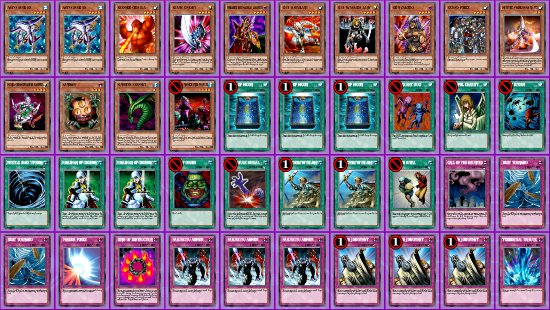
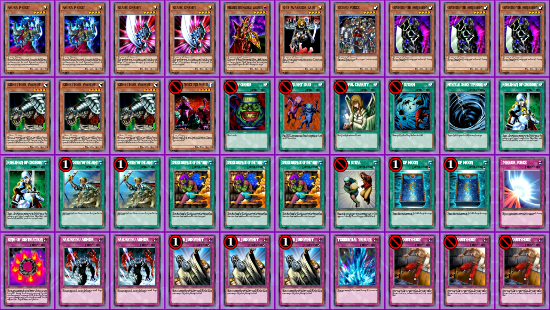
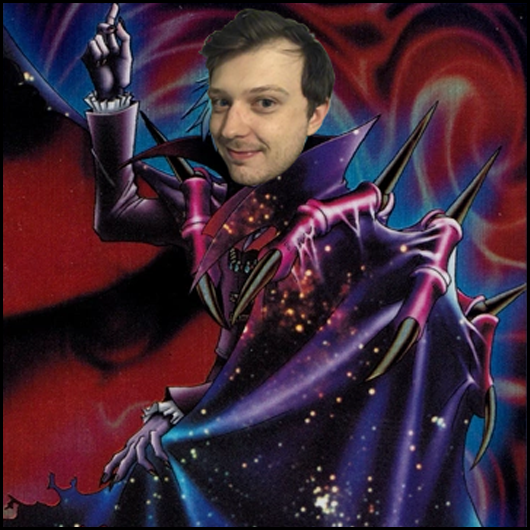
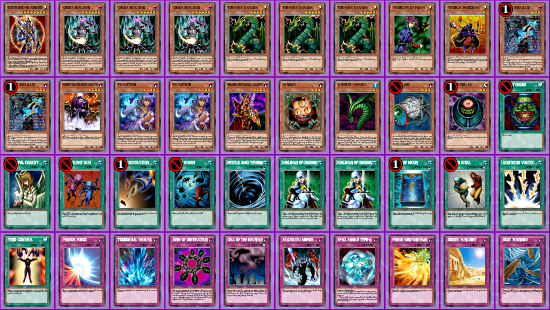
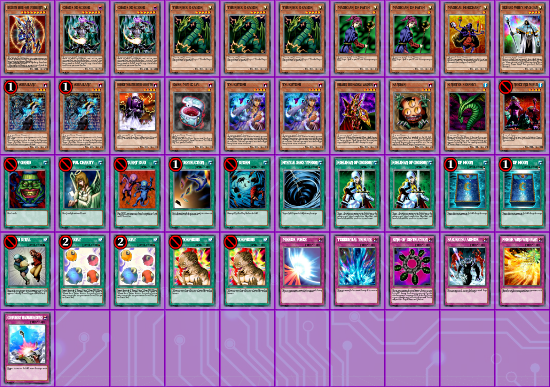

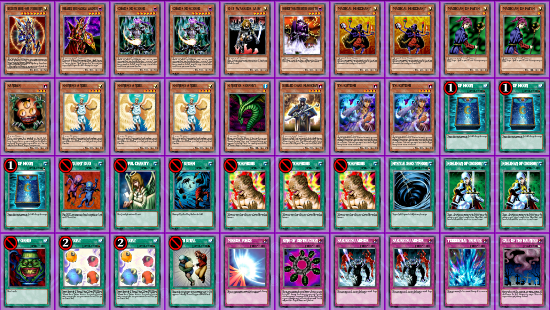
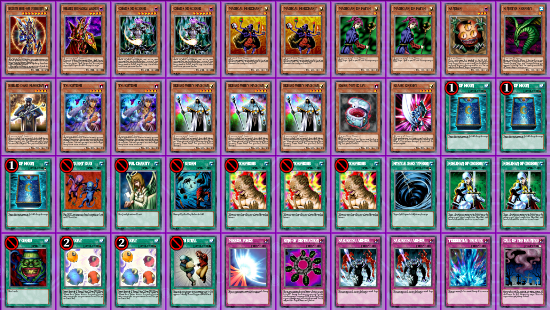

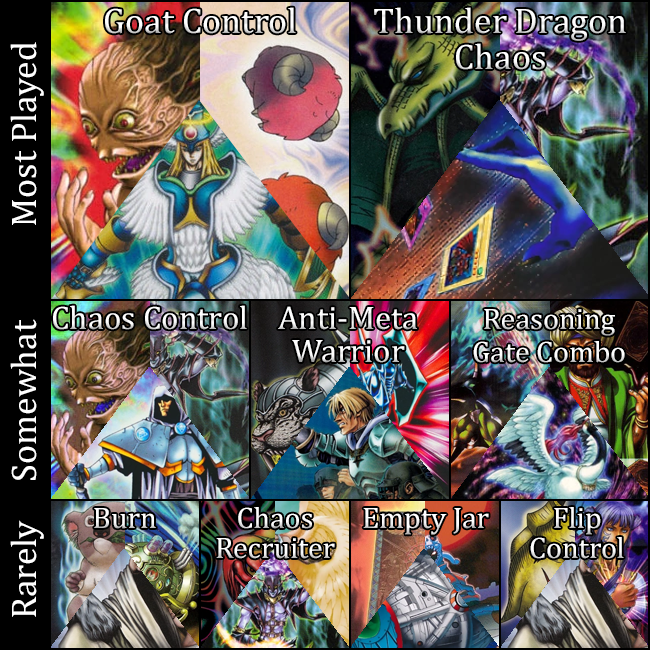







 RSS Feed
RSS Feed